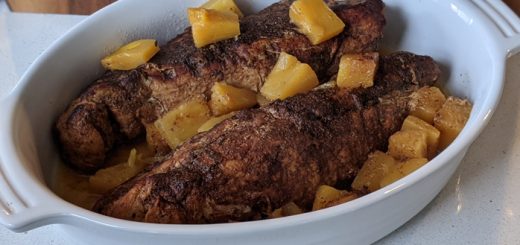I saw a photo essay on Huffington Post’s website the other day (published Jan. 12, 2015 in their Arts & Culture section), entitled These Are The Last Remaining Old School Mississippi Blues Musicians. Photographer Lou Bopp captured haunting images of legendary Delta blues musicians that was shot over the course of a few years beginning in 2008, and the collection is entitled “Portraits of the Blues.” Bopp photographed these bluesmen in an up-close and raw way, conveying the hard lives they must have endured. It got me thinking….
I realize music is like art or fashion. It evolves. It’s no secret to my friends how much the blues has inspired me and just seems to feed my soul. (Sounds corny, but hey…it’s true. And the blues remains my favorite genre to sing.) But blues artists have inspired everyone from Eric Clapton, the Stones, and Zeppelin to more recent artists such as North Mississippi Allstars, Moreland and Arbuckle, and The Black Keys. Initially the message in blues was that of the pain and suffering from working in the fields. That message got electrified as it evolved. But the rawness of Mississippi blues seems to always be the same and hypnotic in nature. And so many of these artists have gone to their graves never realizing any benefit to how they have influenced a genre of music.
Videos to Watch
Years ago my husband and I discovered a movie called Deep Blues: A Musical Pilgrimage to the Crossroads (©1991, Shout Factory). Initially released as a book written by the late musician/music historian Robert Palmer, the film allows us to see some of the last glimpses of traditional Delta blues. The film project was also conceived and produced by Dave Stewart. Most people know him as the Eurythmics’ guitarist, and it is he who literally takes us off the beaten path (and off of paved roads) to artists such as Big Jack Johnson, Jessie Mae Hemphill, Booba Barnes and Jack Owens; he even sits in to accompany R.L. Burnside on guitar. Many of these musicians never really recorded much, but this disk has each artist performing a song or two in its entirety. And I find Palmer’s narration almost soothing….
Another documentary to explore is called Antone’s, Home of the Blues (©2004 SilverStar Entertainment, LLC). This film focuses on the inception and struggles of the now-famous club that started in Austin, Texas, in a not-so-great part of town in 1975. Candid interviews with Clifford Antone (the main founder of the club) as well as musicians and the press describe the legends who played on Antone’s stage.
If you are a music lover and you’ve never seen it, do so. You won’t be disappointed. It’s pretty inspiring that a 25-year old with a passion for the blues could start a club with some of his friends that would lead to a resurgence of almost-forgotten blues artists from across the country (as well as launch the careers of artists such as house band The Fabulous Thunderbirds, Angela Strehli, Sue Foley and Stevie Ray Vaughan).
Antone made it his life’s work to make sure these blues greats were not forgotten and booked them in his club all of the time. For example, after Howlin’ Wolf died in 1976, his band had trouble finding work. To quote his guitarist, the late great Hubert Sumlin, he was told by Chicago club owners, “Wolf dead…you dead.” Well Sumlin pretty much relocated to Austin for a while after Clifford brought him down there to play. Albert Collins would almost drop everything to play at Antone’s. Muddy Waters, Sunnyland Slim, Big Walter Horton, Lazy Lester, Pinetop Perkins, Buddy Guy and Junior Wells…. The list of performers who played Antone’s goes on and on. But what is so impressive is that Clifford Antone fostered respectful and caring relationships with these musicians in an effort to keep the blues alive.
A third DVD worth checking out is called You See Me Laughin’ (©2003 Plain Jane Productions, Inc./©2006 Fat Possum Records). It features personal stories from some of the last traditional Mississippi juke joint heroes such as R.L. Burnside, Junior Kimbrough, T-Model Ford, and Cedell Davis, to name a few. These guys describe lives of poverty, occasional violence and hard luck that drive the pursuit of making their style of music. It’s also an interesting story of the initial distrust of these old-school black musicians with the young white guys of the Fat Possum Records label who truly respect these artists and want to get their music recorded.
Portraits of the Blues
But back to Lou Bopp’s images. Besides his commercial photography background (the client list is extensive, but includes TimeWarner, Deutsche Bank, American Express, and Sports Illustrated) he has made several trips to Mississippi for his ongoing, self-funded project based on his love of the blues, travel and culture. “Portraits of the Blues” encompasses photos of more than 70 Delta musicians—at least half of whom have since passed. But as Bopp explains in his bio, it also got him back to his roots in his love for photography: just a man with a camera, a subject in their own environment and natural lighting. No assistants, no camera crews, no meetings or check lists. He has been able to capture the essence of Mississippi blues, documenting this slice of American musical history for generations to come.
Please check out Lou Bopp’s website for more images and further information. Besides being a photographer (he’s published in books as well as magazines), he worked as cinematographer on the blues music documentary We Juke Up in Here (©2012)—something I have yet to see!
And Lou is a social kind of guy, so reach out.
Lou’s Facebook
Lou’s Twitter
Lou’s Instagram
Lou on LinkedIn







1 Response
[…] Even though he passed in 1993, I think the style of his music is timeless. The way he attacked the strings is nothing short of amazing, since he used a capo and typically worked the bottom half of the fretboard. Amazing. It’s hard for me to pick just one song of his, so this one has good tempo, but in typical Albert Collins fashion, the lyrics are priceless. “Keep on lippin’, baby….” In a documentary we have, Clifford Antone talks so fondly about what a great person Collins was, also. (I have a link and description of the video, Antone’s, Home of the Blues, in a previous post here.) […]